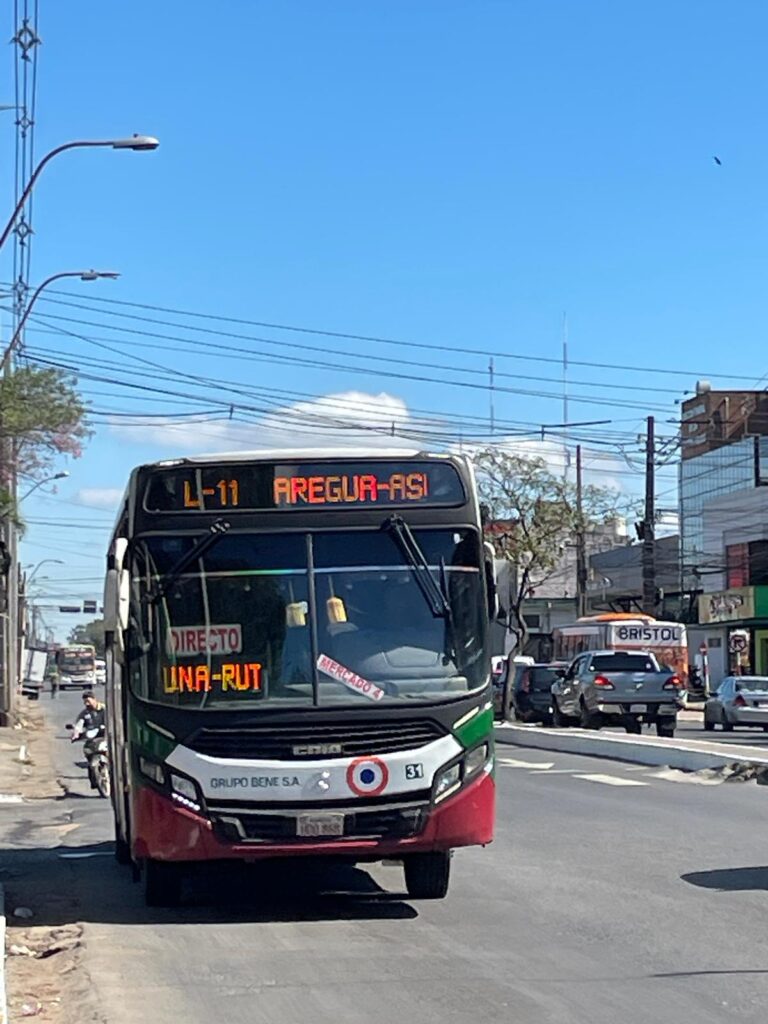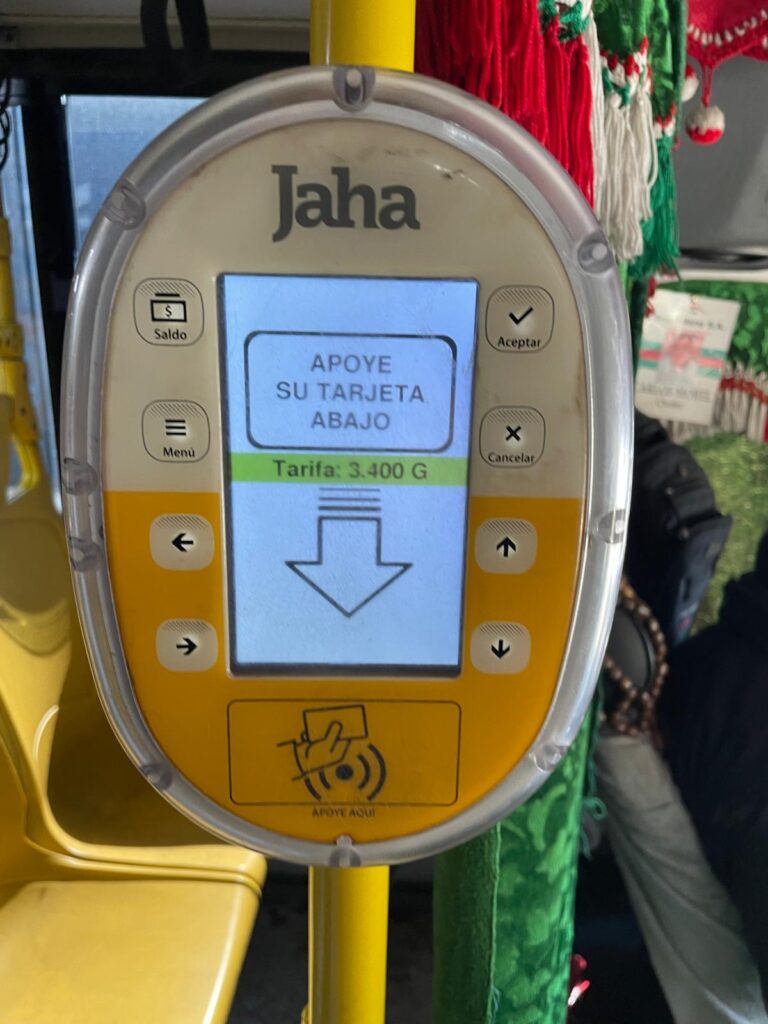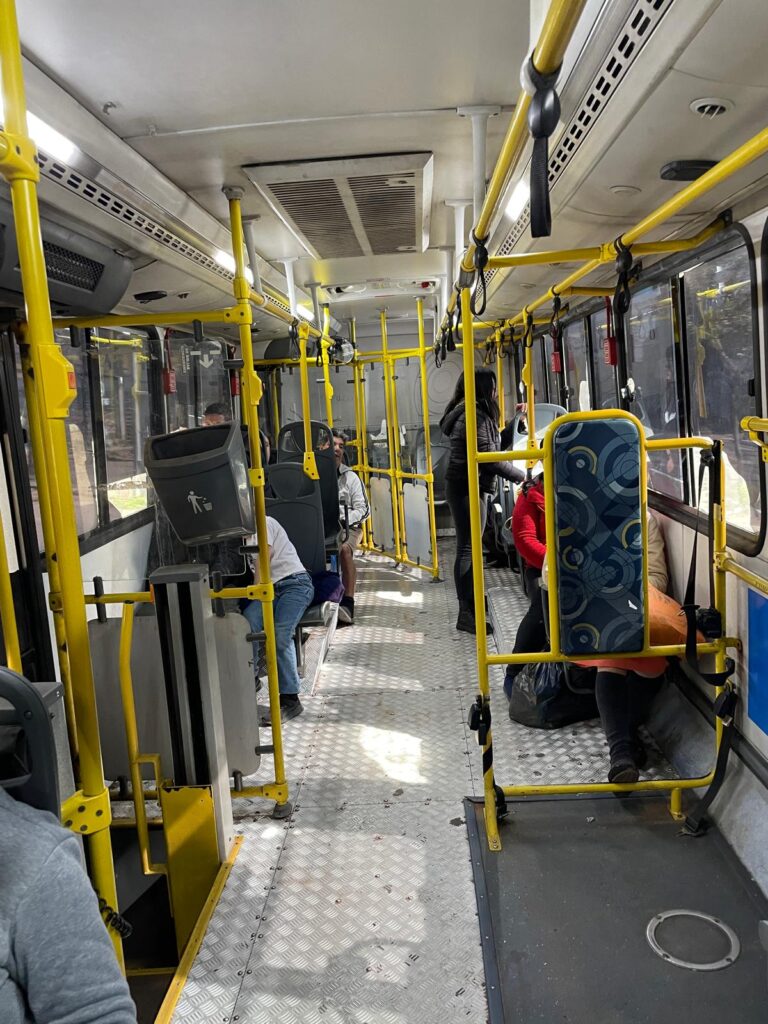Bus Transport in Asuncion: How to get Around Paraguay’s Capital
Disclaimer: Some links on this page may be affiliate links. If you purchase anything through them, I will receive a small commission at no extra cost to you! Further details in the Privacy Policy.
Bus transport in Asuncion is pretty easy once you know what you’re doing. There are numerous buses going round the Paraguayan capital every day. Using Uber or Bolt in Paraguay is often cheap, but the costs can add up for longer distances.
Buses heading out of Asuncion towards nearby towns and cities use the same system, therefore this guide covers trips to the likes of Aregua and other surrounding areas such as San Bernardino as well as the capital itself.
With no train network, taxis and buses are the only forms of public transport in Asuncion. Therefore I will explain how to use them here. Paraguay is worth visiting, so it would be a shame to miss out on some of the highlights.

Buy a Jaha or Mas Card for 25,000 Guaranies from any Aquipago Location
Buses in Asuncion and surrounding areas cannot be paid for with cash.
Instead you will need to purchase either a Jaha card or a Mas card. These cost 25,000 guaranies (£2.60 or US$3.30) with a single journey worth 3,400 guaranies (around £0.35 or US$0.45) included with the purchase of the card.
People with this card will be able to travel around Metropolitan Asuncion easily.
You can get these from any aquipago location, which are generally in pharmacies, supermarkets and shopping malls.
You can easily spot an aquipago location as it will have the word “AQUI” in red above the word “PAGO” in blue, both inside an oval shape.
There are many awesome things to do in Asuncion, so get yourself a bus card to make it easy to get around. And check out some of the Paraguayan capital’s best restaurants whilst you’re at it.
Where to Find Buses in Asuncion
Download the app Jaha GPS on your phone. This gives a list of bus routes within Asuncion and you can see where they go. It only covers the capital city, and not other parts of Paraguay.
There are several buses to surrounding areas outside the capital which use the same card system. These are not included on the Jaha GPS app. Therefore you will need to ask locals where to find them.
Locals in Paraguay are very friendly and willing to help, although they rarely speak English. Therefore you should learn a bit of Spanish, or use this handy Google Translate guide to find out where to go.
Asuncion Bus Terminal is the main bus station in the city, although the majority of buses here are long-distance buses to other parts of Paraguay and other countries. It is known locally as Terminal de Omnibus Asuncion, so look out for this name on Google Maps when you’re ready to leave the capital.
How to get on the Bus in Asuncion
If you see the bus coming, hold your arm out to wave it down. When it stops, get on quickly as the buses don’t hang around here.
You don’t need to interact with the driver at all. Instead hold your Jaha/Mas card against the scanner, which looks like the one in the picture below. The scanner says “apoye su tarjeta abajo” meaning “place your card below”.
You will need to hold it for several seconds and an arrow will appear on the screen, gradually filling with colour for every second that you hold the card.
Once the arrow is full, you can remove your card and head through the turnstile to where the seats are. If you’re lucky, you will be able to sit. If not, you will have to stand whilst holding onto the bars overhead.

How Much do Buses Cost in Asuncion?
Buses in Asuncion are cheap. Very cheap in fact.
A one-way journey costs 3,400 guaranies (£0.35/US$0.45) if the bus has air conditioning, and 2,300 guaranies (£0.24/US$0.30) if it does not.
All tickets are one-way. It will cost the same amount for the reverse journey.
Are Buses in Asuncion Safe?
Despite Paraguay being one of Latin America’s safest countries, you do need to take a little extra care on the buses.
There is a reasonably high risk of pickpocketing. Do not use your phone on buses unless you really have to, it could be snatched from your hand and you will never see it again.
Also padlock your bags and strap them to yourself to keep them safe. I explain this in more detail in my guide to solo travel safety tips.
The other danger is reckless driving. Paraguayan road users don’t adhere to the same road safety standards as you may be used to if coming from a western country.
When buses stop, get off quickly and try not to be the last person off the bus. Drivers often leave before everyone is off.
I experienced this firsthand and nearly lost my balance getting off the bus because the driver started moving as I still had one foot on the last step.
I talk in detail about safety in this Paraguay safety guide.
Do all Buses in Paraguay use the Same System?
No, this system only applies to local buses in Asuncion and surrounding areas. In the rest of Paraguay, buses are cash only. You generally get on the bus, sit down, and someone will come over to collect your money.
So just remember, bring your Jaha or Mas card to catch buses in Asuncion (and nearby areas with connections to the capital). And bring cash for everywhere else.
To get tickets for long-distance buses elsewhere in Paraguay or abroad, I would recommend you book online using Busbud or another reputable company.
Alternatively, you can turn up at the Terminal de Omnibus and book tickets in person. This obviously requires more effort than booking online, but you may be able to find cheaper tickets and more routes which aren’t advertised on the internet. Although your Spanish will need to be at a conversational level to pull this off.
Buses run to neighbouring countries Bolivia, Argentina and Brazil. I did the reverse journey into Asuncion from Salta, Argentina which required getting off the bus in Clorinda. But other routes I’ve done including Santa Cruz (Bolivia) to Asuncion have been direct.
Popular destinations include Encarnacion, Concepcion and Ciudad del Este which is where you can cross the crazy Triple Frontier border region to reach Iguazu Falls.
Shorter-distance buses across the country to locations such as the famous Jesuit missions are also cash-only.

More Posts on Paraguay
- The 17 Best Cities In South America To Visit In 2025
- The Safest Countries In South America In 2025: Ranked
- Best Countries In South America To Travel To: Ranked
- The 15 Most Underrated Countries To Visit In 2025
- What Are The Best South American Countries For First Timers?
- What Are The 10 Safest Cities In South America In 2025?
- The Ultimate 6 Month South America Itinerary On A Budget
- Salta To Asuncion By Bus (Clorinda/Jose Falcon Border)
- 7 Day Paraguay Itinerary: From Asuncion To Ciudad Del Este
- Iguazu Falls Border Crossing: How To Cross The Triple Frontier Between Argentina, Brazil And Paraguay
- 6 Best Restaurants In Asuncion Paraguay: All-You-Can-Eat Delights
- Helpful Information On Visiting The Jesuit Missions In Paraguay
- 19 Best Things To Do In Asuncion, Paraguay
- Is Paraguay Worth Visiting? South America’s Hidden Gem
- Is Paraguay Safe For Tourists To Visit?
- When Is The Best Time To Visit Paraguay?
- Everything You Should Know Before Visiting San Bernardino, Paraguay
- Visiting Aregua In Paraguay: The Home Of The Strawberry Expo
- Bus Transport In Asuncion: How To Get Around Paraguay’s Capital
- Safest Latin American Countries To Visit In 2025
